The Problem with Appendix N
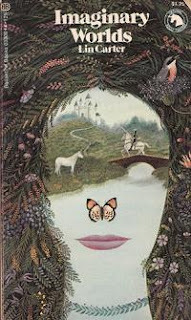 Since its start sixteen(!) years ago this month, an overriding concern of this blog has been the literary inspirations of Dungeons & Dragons, particularly those stories and books belonging to what I call "pulp fantasy." Though there are several reasons why this topic has been of such interest to me, the primary one remains my sense that, in the decades since its initial publication in 1974, Dungeons & Dragons has moved conceptually ever farther away from its origins in the minds of Dave Arneson and Gary Gygax – and the works that inspired them.
Since its start sixteen(!) years ago this month, an overriding concern of this blog has been the literary inspirations of Dungeons & Dragons, particularly those stories and books belonging to what I call "pulp fantasy." Though there are several reasons why this topic has been of such interest to me, the primary one remains my sense that, in the decades since its initial publication in 1974, Dungeons & Dragons has moved conceptually ever farther away from its origins in the minds of Dave Arneson and Gary Gygax – and the works that inspired them.The argument can be made, of course, that this movement was, in fact, a good thing, as it broadened the appeal of both D&D and, by extension, roleplaying games as a hobby, thereby leading to their continued success half a century later. I have no interest in disputing this point of view at the present time, not least of all because it contains quite a bit of truth. My concern has rarely been about the merits of the shift, but rather about establishing that it occurred. To do that, one needs to recognize and understand the authors and books that inspired the game in the first place.
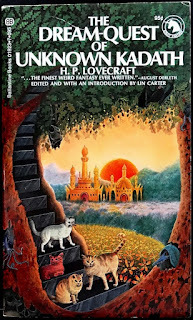 It's fortunate, then, that Gary Gygax was quite forthcoming about his literary inspirations, providing us with several different lists of the writers and literature that he considered to have been the most immediate influences upon him in his creation of the game. The most well-known of these lists is Appendix N of the AD&D Dungeon Masters Guide. While I was not the first person to draw attention to the importance of Appendix N – Erik Mona, publisher of Paizo, springs immediately to mind as a noteworthy early advocate – it's no mere boast to suggest that Grognardia played a huge role in promoting Appendix N and its contents during the early days of the Old School Renaissance.
It's fortunate, then, that Gary Gygax was quite forthcoming about his literary inspirations, providing us with several different lists of the writers and literature that he considered to have been the most immediate influences upon him in his creation of the game. The most well-known of these lists is Appendix N of the AD&D Dungeon Masters Guide. While I was not the first person to draw attention to the importance of Appendix N – Erik Mona, publisher of Paizo, springs immediately to mind as a noteworthy early advocate – it's no mere boast to suggest that Grognardia played a huge role in promoting Appendix N and its contents during the early days of the Old School Renaissance.So successful was that promotion that discussions of Appendix N proliferated well beyond this blog, to the point where, a decade and a half later, "Appendix N fantasy" has become almost a brand unto itself. One need only look at the Dungeon Crawl Classics RPG from Goodman Games to see a high-profile example of what I mean, though I could cite many others. If nothing else, it's a testament to just how inspiring others found the authors and books that had earlier inspired Gygax. There was clearly a hunger for a different kind of fantasy beyond the endless parade of Tolkien knock-offs Terry Brooks inaugurated (and that Dragonlance formally introduced into D&D).
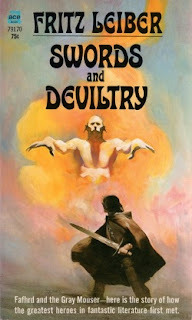 Yet, for all that, Appendix N suffers from a very clear problem, one that has limited its utility as a guide for understanding Dungeons & Dragons as Gary Gygax understood it: it's just a list. Gygax, unfortunately, provides no commentary on any of the authors or works included in the list, stating only that those he included "were of particular inspiration" He later emphasizes that certain authors, like Fritz Leiber, Robert E. Howard, and H.P. Lovecraft, among others, played a stronger role in "help[ing] to shape the form of the game." Beyond these brief remarks, Gygax says nothing else about what he found inspirational in these books and authors or why he selected them over others he chose not to include.
Yet, for all that, Appendix N suffers from a very clear problem, one that has limited its utility as a guide for understanding Dungeons & Dragons as Gary Gygax understood it: it's just a list. Gygax, unfortunately, provides no commentary on any of the authors or works included in the list, stating only that those he included "were of particular inspiration" He later emphasizes that certain authors, like Fritz Leiber, Robert E. Howard, and H.P. Lovecraft, among others, played a stronger role in "help[ing] to shape the form of the game." Beyond these brief remarks, Gygax says nothing else about what he found inspirational in these books and authors or why he selected them over others he chose not to include.In addition, Appendix N is long, consisting of nearly thirty different authors and many more books. Drawing any firm conclusions about what Gygax saw in these works is not always easy, something that, in my opinion, might have been easier had the list been shorter and more focused. That's not to say it's impossible to get some sense of what Gygax liked and disliked in fantasy and how they impacted his vision for Dungeons & Dragons, but it's certainly harder than it needs to be.
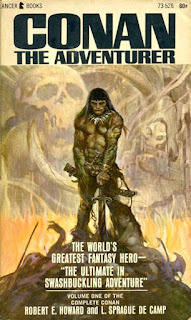 Compare Gygax's Appendix N to the one found in RuneQuest. The list is about half as long (if you exclude other RPGs cited) and every entry is annotated, albeit briefly. Reading the RQ version of Appendix N, one has a very strong sense of not only why the authors found a book inspirational, but what each book inspired in them (and, thus, in RuneQuest). As much as I love Gygax's selection of authors and works, I can't help but think that selection would have proven more useful if he'd taken the time to elaborate, if only a little, on what he liked about its entries.
Compare Gygax's Appendix N to the one found in RuneQuest. The list is about half as long (if you exclude other RPGs cited) and every entry is annotated, albeit briefly. Reading the RQ version of Appendix N, one has a very strong sense of not only why the authors found a book inspirational, but what each book inspired in them (and, thus, in RuneQuest). As much as I love Gygax's selection of authors and works, I can't help but think that selection would have proven more useful if he'd taken the time to elaborate, if only a little, on what he liked about its entries.I found myself thinking about this recently, because I've been pondering the possibility of including an analog to Appendix N in Secrets of sha-Arthan . Since the game has a somewhat exotic setting that deviates from the standards of vanilla fantasy, I feel it might be helpful to point to pre-existing works of fantasy and science fiction (not to mention other roleplayng games) that inspired me as I developed the setting. That's why, if I do include a list of inspirations, it'll likely be both fairly short and annotated – closer to RuneQuest's Appendix N than to Gygax's.
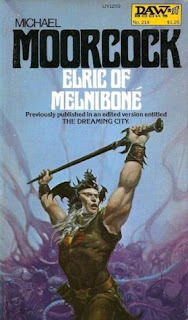 None of this should be taken as a repudiation of Appendix N or the works included in it as vital to understanding Dungeons & Dragons and Gary Gygax's initial vision for it. I still think there is insight to be gleaned by reading and re-reading the works of pulp fantasy included in the appendix and will continue to recommend them to anyone who asks for recommendations of fantasy worthy of their time. Nor should any of the foregoing discourage anyone from taking the time to read Howard or Leiber or Lovecraft, as doing so is time well spent and more than sufficient reward in its own right. However, with some time and perspective, I recognize that Appendix N has certain shortcomings that can make it less than adequate as a guide to "what Dungeons & Dragons is about."
None of this should be taken as a repudiation of Appendix N or the works included in it as vital to understanding Dungeons & Dragons and Gary Gygax's initial vision for it. I still think there is insight to be gleaned by reading and re-reading the works of pulp fantasy included in the appendix and will continue to recommend them to anyone who asks for recommendations of fantasy worthy of their time. Nor should any of the foregoing discourage anyone from taking the time to read Howard or Leiber or Lovecraft, as doing so is time well spent and more than sufficient reward in its own right. However, with some time and perspective, I recognize that Appendix N has certain shortcomings that can make it less than adequate as a guide to "what Dungeons & Dragons is about."
Published on March 17, 2024 21:00
No comments have been added yet.
James Maliszewski's Blog
- James Maliszewski's profile
- 3 followers
James Maliszewski isn't a Goodreads Author
(yet),
but they
do have a blog,
so here are some recent posts imported from
their feed.



